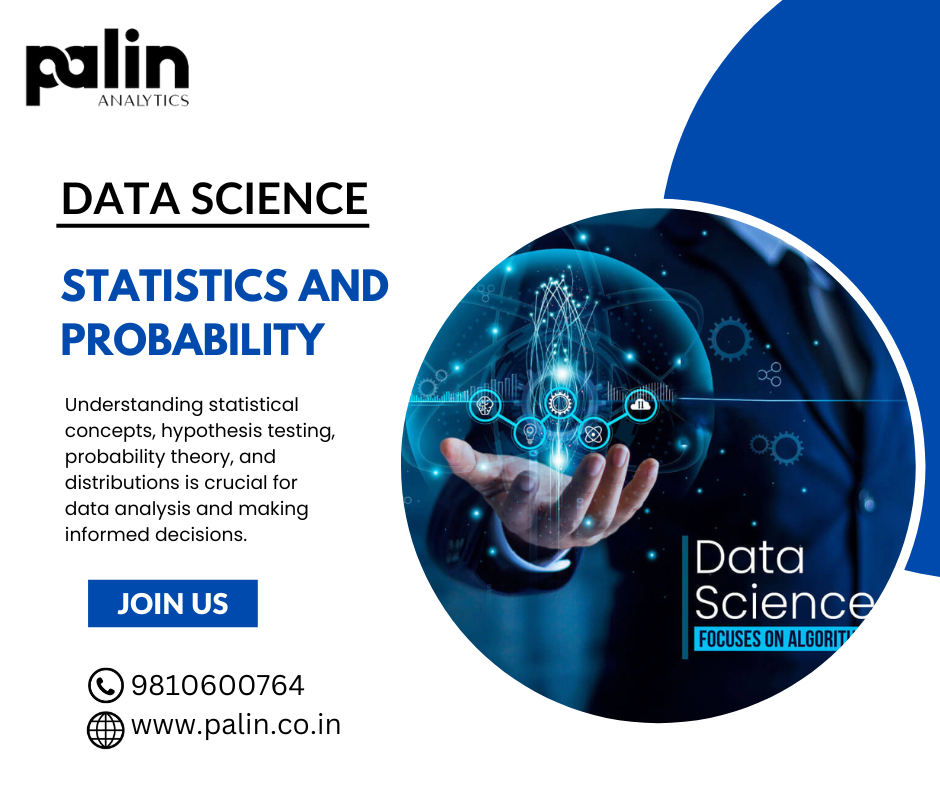Statistics and probability are foundational concepts in data science. They provide the necessary framework for understanding and analyzing data, making predictions, and drawing meaningful conclusions. Here’s a brief overview of statistics and probability in the context of data science:
Statistics: Statistics involves the collection, organization, analysis, interpretation, and presentation of data. In data science, statistics play a vital role in understanding the characteristics of datasets, uncovering patterns and relationships, and making data-driven decisions. Some key statistical concepts in data science include:
- Descriptive Statistics: Descriptive statistics summarize and describe the main features of a dataset. Measures such as mean, median, mode, standard deviation, and variance provide insights into the central tendency, variability, and distribution of the data.
- Inferential Statistics: Inferential statistics allow us to draw conclusions or make predictions about a population based on a sample. Techniques such as hypothesis testing, confidence intervals, and p-values help assess the reliability and significance of observations.
- Probability Distributions: Probability distributions model the likelihood of different outcomes occurring in a random event. Common distributions used in data science include the normal (Gaussian), binomial, Poisson, and exponential distributions. Understanding these distributions helps in modeling and analyzing data.
Probability: Probability is the measure of the likelihood of an event occurring. In data science, probability is utilized to model uncertainty and quantify the chances of different outcomes. It forms the basis for many statistical techniques and machine learning algorithms. Key probability concepts in data science include:
- Basic Probability Concepts: These include understanding the concepts of events, outcomes, sample spaces, and probability axioms. Calculating probabilities using counting techniques like permutations and combinations is also essential.
- Conditional Probability: Conditional probability measures the likelihood of an event occurring given that another event has already occurred. It is crucial for understanding dependencies and relationships between variables.
- Bayes’ Theorem: Bayes’ theorem allows updating the probability of an event based on new evidence or information. It is used in Bayesian statistics and machine learning algorithms like Naive Bayes classifiers.
- Probability Distributions: Probability distributions represent the likelihood of different outcomes in a random variable. Continuous distributions like the normal distribution and discrete distributions like the binomial and Poisson distributions are fundamental for data analysis and modeling.
Statistics and probability provide the tools for analyzing data, making inferences, and building models in data science. They help data scientists gain insights, test hypotheses, and make data-driven decisions, ultimately contributing to the development of accurate predictive models and actionable insights.

